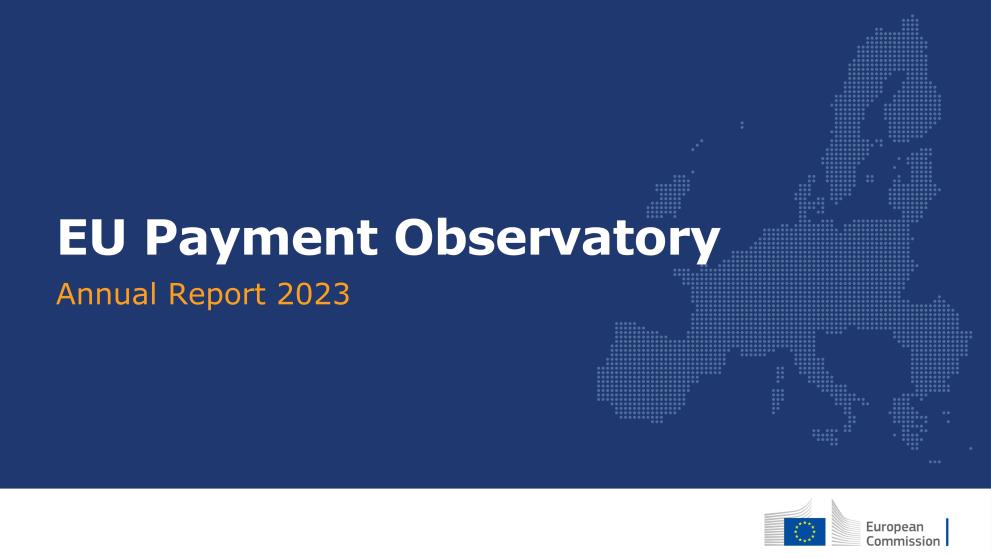
The recently published first annual report of the EU Payment Observatory presents a comprehensive analysis of the trends in payment behaviour in commercial transactions in the EU in the context of the efforts to combat late payments.
What are the main findings of the report?
The report finds that the share of enterprises that indicate facing issues due to late payments slightly increased in 2022. Equally, the average payment period in B2B transactions increased from 49 to 55 days. The rising inflation during this period could be one of the explanations. As well, there is a ripple effect that causes late payments to lead to more late payments. The study also found that the percentage of on-time payments tends to decrease with the size of the company and that governments typically pay later than companies.
Nonetheless, the effects of late payments for companies in 2022 were less severe than in 2019, which might be linked to the success of COVID support measures. Delayed payments caused less bankruptcies in 2022 than the four preceding years. However, they had a greater negative impact on the expansion and digitalisation efforts of companies.
The data shows big country and sectorial differences in which relates to late payments. Equally, during the research phase very relevant limitations on the late payments data across the EU were found. These limitations are even more pronounced in G2B transactions.
There is no single way of tackling the issue of late payments and Member States have adopted different approaches. 139 measures were identified in the EEA and the UK to combat late payments. Most measures were preventive and fourth of each five put forward by public authorities. The report also provides examples of good practices.
Late payments in B2B and G2B transactions have multiple damaging effects, particularly on SMEs. They affect the liquidity of companies which can prevent investment and expansions, and they can hinder digital and environmental transformation initiatives. Delayed payments contribute to financial woes and may even lead to bankruptcies.
What’s next?
The annual report of the EU Payment Observatory will be presented in a webinar on 7 March at 16:00 to 17:00 (CET).
If you are interested in learning more about its findings,
The EU Payment Observatory is currently preparing two thematic reports focused on enforcement measures and electronic invoicing. They will be published in the first part of 2024.
Background information
The EU Payment Observatory is a 2-year contract set up in 2023 under the Single Market Programme (SMP) in the framework of the revision of the Late Payment Directive confirmed during the 2022 State of the Union address. The Observatory’s objective is to monitor trends and developments on payment behavior in the EU to combat late payments.
For more information:
- Visit the EU Payment Observatory official webpage
- Check its factsheets:
- Subscribe to the Newsletter
Details
- Publication date
- 1 March 2024
- Author
- European Innovation Council and SMEs Executive Agency
